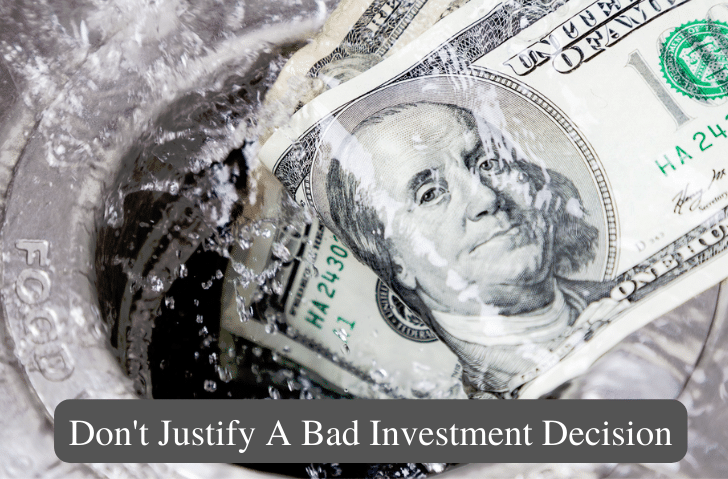Investing your hard-earned money is much like navigating a labyrinth; exciting, unpredictable, and occasionally a wee bit terrifying. However, it’s the allure of potentially striking gold that drives us to venture into the maze, often leading to some, let’s say, less than stellar decisions. But, what makes us justify our bad decisions in investing?
The Get-Rich-Quick Mirage:
Picture this: A hot stock promises astronomical returns. It’s risky, but the allure is irresistible. You invest. It crashes. Welcome to the first pitfall in the arena of bad decisions in investing – the get-rich-quick mirage. This seductive fantasy appeals to our desire for instant gratification and unearned wealth, often leading us to throw caution (and money) to the wind. Then, to justify this reckless decision, we tell ourselves, “No risk, no reward”, conveniently overlooking the fact that this isn’t the lottery.
Post-Investment Rationalization:
After making a risky investment that doesn’t pan out, instead of accepting our mistake, we often indulge in post-investment rationalization. Phrases like “It’s a long-term game” or “There’s always a learning curve” become our self-soothing mantras. This way, we manage to justify our bad decisions in investing and maintain our self-image as savvy investors, even when our portfolio might suggest otherwise.
The Fear of Missing Out (FOMO):
A major driver of bad decisions in investing is FOMO. You know, the “Oh, I heard everyone’s investing in cryptocurrency, I should too” thought. We often invest in the ‘next big thing’ without understanding it, only to later justify it with “Well, everyone else was doing it”. Like lemmings, we follow the investing crowd, often ending up in a financial plunge.
The Sunk Cost Fallacy:
How many times have you clung onto a sinking investment just because you’d already invested heavily in it? This is known as the sunk cost fallacy and it’s a classic example of how we justify bad decisions in investing. We convince ourselves to stick with the investment in hopes of a miraculous recovery, repeating the mantra, “I’ve come too far to give up now”. In reality, though, we might just be throwing good money after bad.
Overconfidence Bias:
Sometimes we believe we’re financial wizards who can predict market trends. This overconfidence bias can lead to reckless investments. When they go south, we justify it by saying, “The market is unpredictable” or “It was just bad luck”. Truth be told, the market is not a crystal ball, and our guesses are, well, just that – guesses.
Understanding the psychology of money can unlock the patterns behind our bad decisions in investing. The next time you’re about to justify a questionable investment, pause and reflect. Are you falling into a familiar trap? By learning from our past, we can make better future decisions. After all, in investing, the only bad decision is not learning from our previous ones. In the end, the key to a good investing is to have realistic expectations. Understand the limits of your portfolio and make sure to Contact me when planning for retirement.

